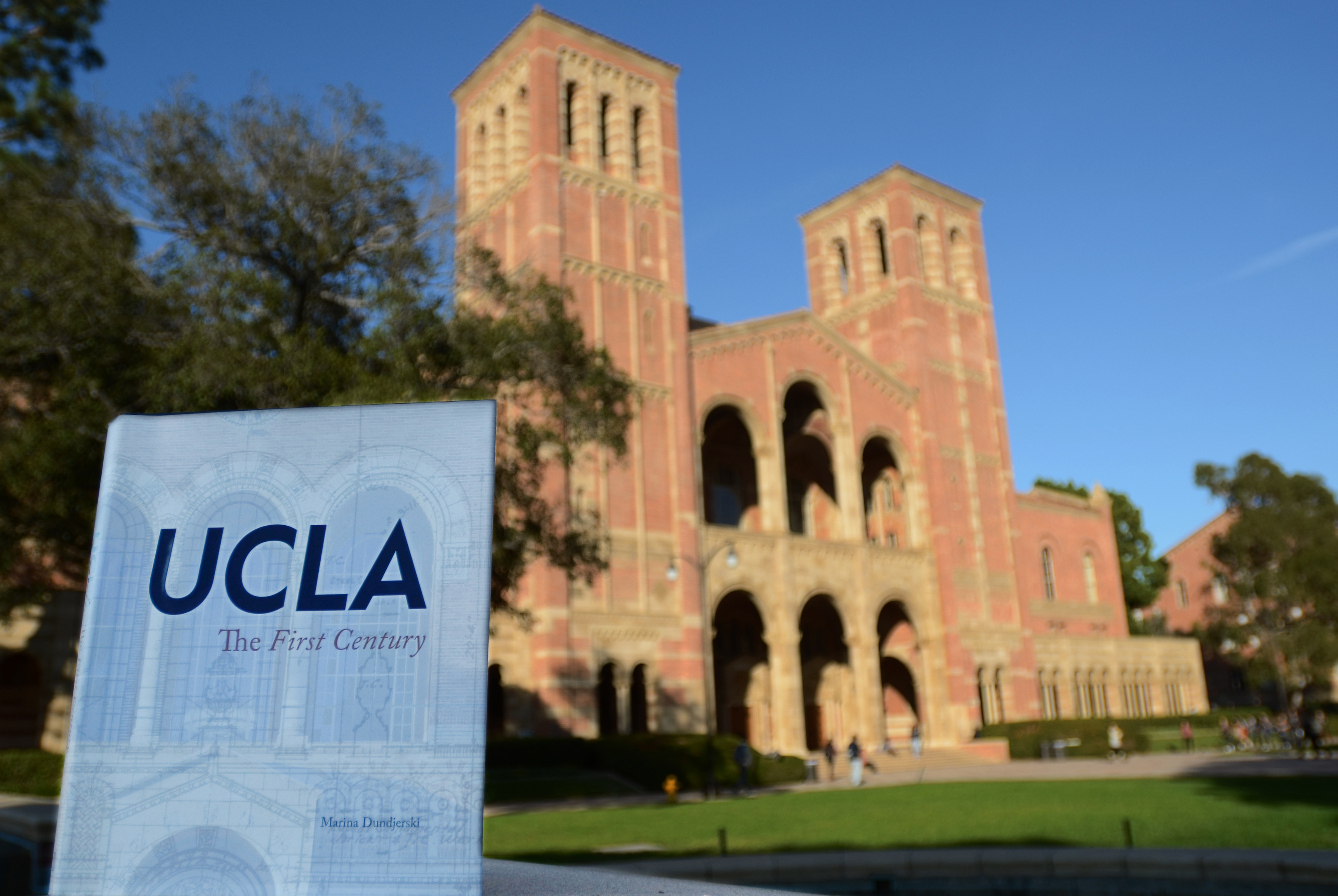In 1942, UCLA and USC students put their differences aside and used the football rivalry game to raise almost $2.1 million in war bonds.
This piece of university history, which researchers found in a promotion in an old issue of the Daily Bruin, is included in “UCLA: The First Century” ““ the first UCLA history book to be published in 42 years.
The book, released Nov. 23, details the university’s major figures and happenings since its origins, as well as new information about the first 50 years of UCLA that has become available since the last book recording the school’s history. The Gold Shield Alumnae of UCLA organization, the Alumni Association and the Ahmanson Foundation, provided the funding.
UCLA alumnus and former Daily Bruin news editor Marina Dundjerski authored “UCLA: The First Century” and spearheaded the extensive research involved in its production. The book involved more than 200 interviews and eight years of sifting through archives at UC Berkeley and other locations.
The project started 11 years ago when Keith Brant, former director of the UCLA Alumni Association, was having lunch with a member of Gold Shield Alumnae.
They realized UCLA had not had a history book published since 1969, Brant said.
Brant hired Dundjerski to write the book in 2003. She spent the first six months of her work researching broadly, drawing on her experience covering UCLA with the Daily Bruin and as a campus correspondent for the Los Angeles Times, she said.
Dundjerski quickly realized that much of UCLA’s early history was located at UC Berkeley, and traveled north for extended periods of time to find it. Dundjerski also sifted through archives at USC and other campuses.
She referred to minutes from UC Board of Regents meetings as far back as 1913, when the regents began discussing the opening of a southern branch to the UC campus in Berkeley.
With the help of student research assistants, she pored through yearbooks since UCLA’s establishment in 1919. Hired journalists assisted by conducting various interviews, and student research assistants and interns were among those who helped Dundjerski compile, organize and fact-check her work.
At one point, more than 100 binders filled with research could be found in file cabinets in the James West Alumni Center. Chapter Eight, titled “In the Middle of a Revolution,” took up 60 binders by itself, said Rachel Mundstock, a student research assistant who graduated from UCLA in 2010.
“Fact-checking was like a treasure hunt across campus,” Mundstock said.
Surprising details about the university surfaced in the course of the research.
Even more interesting than construction projects that did happen were those that didn’t, Mundstock said. For instance, there was talk of putting the Fowler Museum in the Arroyo Bridge in North Campus across Perloff Hall, she said.
The process also relied on outside help, turning to alumni to help identify photos and faces. Dundjerski also directs the UCLA History Project, a website that features a timeline of UCLA history, explanations of traditions and songs. The project was created to facilitate outreach to alumni who could help in this process, she said.
Dundjerski also reached out former UCLA students who were Japanese internees during World War II. She said the first history book, released in 1969, did not elaborate on subjects related to World War II that were still too painful.
During the war, some Japanese-American students left camps for other campuses but most were unable to return to UCLA to earn degrees.
The interviews helped piece together a more complete picture of UCLA history, Dundjerski said.
“I wanted to make it an authentic story, and not leave out the thorny details,” she said.
